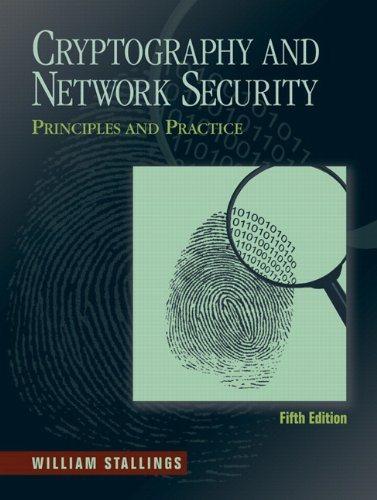Answered step by step
Verified Expert Solution
Question
1 Approved Answer
Cyclic Redundancy Check (CRC) is a method of detecting accidental changes/errors in communication channel. In implementing this method, a transmitter sends an encoded data

Cyclic Redundancy Check (CRC) is a method of detecting accidental changes/errors in communication channel. In implementing this method, a transmitter sends an encoded data that consists of n bits constructed in the following way: Step 1: Obtain a binary number from a generator polynomial consisting of k bits (as you have learned during the course) Step 2: For the m bits binary data message, augment the message by adding k-1 zeros at the end of the data message Step 3: Use modulo-2 binary division to divide binary data obtained from Step 2 by the key obtained from Step 1, and store remainder of division. Step 4: Append the remainder at the end of the binary message data m to form the encoded data of length n, and send it to the receiver Now, assume that a standard for some system specifies the use of CRC with the following generator polynomial: x + x + 1. a) What binary number does this generator represent? (10 marks) b) If the transmitter is to send the following data message: 100100. Follow up the procedure explained above to find the remainder, and the encoded data to be sent. (20 marks) c) Suppose the receiver receives the following data: 100000001. To check if there is an error in the received data, the receiver performs modulo-2 division again and if the remainder is 0, then there are no errors. Check if there are errors in the received encoded data message. (20 marks)
Step by Step Solution
There are 3 Steps involved in it
Step: 1

Get Instant Access to Expert-Tailored Solutions
See step-by-step solutions with expert insights and AI powered tools for academic success
Step: 2

Step: 3

Ace Your Homework with AI
Get the answers you need in no time with our AI-driven, step-by-step assistance
Get Started


